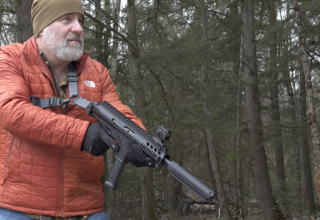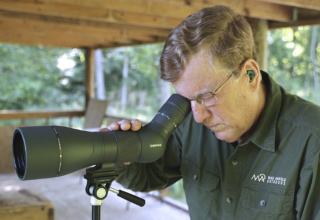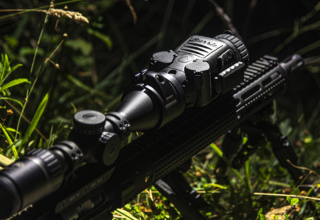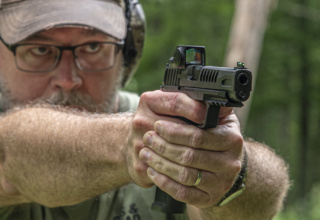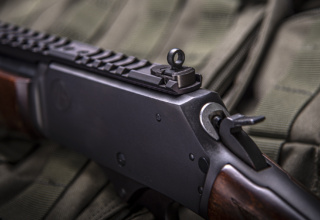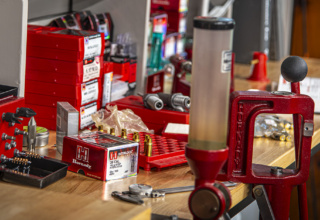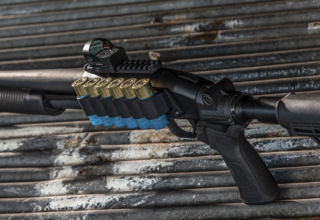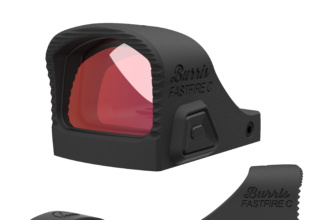There’s an adage that goes something like, “The most dangerous knife is a dull knife.”
Believe it.
Dull knives tempt you to use more force and pressure, hacking and sawing to get the job done. The potential for slipping and injury increases with the bluntness of the blade, and if the job does get done, the results are usually less than acceptable.
All outdoors enthusiasts need knives and they need them to be sharp. Unfortunately, the fine art of whetstoning a blade to a razor’s edge is a skill few bother to develop. The good news is, you no longer must in order to get a serviceable edge.
As a young hunter, I took pride in learning how to put a razor-sharp edge on my knives. It was a skill my dad taught me, and one I perfected once I got my hands on an old barber stone that my grandpa had tucked in his work bench. That was a serious piece of Arkansas rock. It was coal-black and so hard it rang like steel whenever the knife blade touched it, but, wow…could it ever hone an edge.
Over the years, I’ve tried many different types of stones, sticks, steel, ceramics, electric sharpeners, and a long list of gidgets and gadgets that claimed to be able to put a wicked edge on a hunting knife. Some made a decent showing. Most fell far short of their hype and my expectations.
 So, it was with a large dose of skepticism that I approached this review of GATCO’s Edgemate Ultimate 5-Piece Diamond Knife Sharpening System. I’d been down the diamond sharpener road before and had never come away impressed. The other systems I had tried always seemed to require so much finishing work that I could have saved much time and effort simply by using the old-school stone-and-oil process. You can, therefore, imagine my surprise when I tried the Edgemate system on my favorite whitetail boning knife and it actually worked. Not only did the GATCO system deliver a handsome edge, it also did something I could never achieve with the best sharpening and honing stones alone—achieve a uniformly flat bevel.
So, it was with a large dose of skepticism that I approached this review of GATCO’s Edgemate Ultimate 5-Piece Diamond Knife Sharpening System. I’d been down the diamond sharpener road before and had never come away impressed. The other systems I had tried always seemed to require so much finishing work that I could have saved much time and effort simply by using the old-school stone-and-oil process. You can, therefore, imagine my surprise when I tried the Edgemate system on my favorite whitetail boning knife and it actually worked. Not only did the GATCO system deliver a handsome edge, it also did something I could never achieve with the best sharpening and honing stones alone—achieve a uniformly flat bevel.
The 5-piece Edgemate kit comes with a proud $99.99 MSRP, although the street price is more in the $75 range. Is it worth the price? The question you should ask yourself is, “Can I properly and effectively sharpen my knives with the tools I currently have?” If your answer is, “No,” then the cost is definitely worth it, in our opinion.
The Edgemate #10006 system consists of three diamond sharpeners (course, medium, and fine), an ultra-fine finishing hone (ceramic), an angled stone for sharpening serrated blades, a knife clamp/angle guide, and a bottle of honing oil. All of this comes in a plastic case that in no way reflects the quality and performance of the kit components. In fact, our box arrived by UPS with one corner broken off and the lid hinge had begun to crack after only three or four openings. We expect this to be tossed into the “round file” in short order.
As you may suspect, the kit’s multiple sharpeners and hone allow for progressive edge shaping—a necessity whether you are getting a well-used edge back in shape or need to completely redo the bevel on a worn-out knife.

To achieve the optimal bevel, the included clamp/angle guide is employed. This two-piece unit clamps the knife securely in place and features six guide slots to ensure a consistent angle throughout the bevel-shaping process. Which angle you choose depends on the type of blade you are beveling. The angles range from 30º to 11º. For reference, most folding and fixed-blade hunting, pocket, and tactical knives utilize a 25º bevel, or thereabout. The guide slots are integrated into both halves of the clamp/angle guide assembly. This allows you to shape the bevels on both sides of the blade without having to unclamp, flip, and re-clamp the knife.

Although not part of the Edgemate system, GATCO offers the Easy Grip Clamp Mount that we highly recommend. This is a mount shaped like a pistol grip with a wide base that is pre-drilled, so you can screw it into a work bench or simply use it unattached. The clamp/angle guide slips into the mount, providing you with a sturdier assembly and greater control as you work the sharpeners and hone along the blade edges.
In order to give the Edgemate a thorough and “fair chance” evaluation, I decided to use it on my go-to boning knife. With hunting season over and having processed several deer with it over the previous months, the edge was long overdue for a refresh. I also chose this knife because it is more flexible than my fixed-blade or folding hunting knives, and that flexibility would provide an excellent opportunity to see how the system handled similar knives (boning and fillet knives) that tend to bend when you apply pressure along the forward end. The result impressed me. I was able to achieve a perfectly flat bevel and sharp edge from heel to tip.
The kit includes an instruction sheet glued to the inside of the case lid. It explains the simple process for securing a knife into the clamp/angle guide, recommends the bevel angle to use for a particular knife type or application, and describes how to work the sharpeners and hone to create the desired bevel. The procedure is as follows:

Secure the knife to the clamp/angle guide.

Select the diamond sharpener you wish to begin with. Here, we will completely redo the bevel on a 38-year-old Buck 110 folding knife, so we will start with the course diamond sharpener.

Apply a light coat of honing oil to the sharpener. This will help suspend the swarf, or micro particles, generated by the sharpening process and prevent buildup that can reduce the effectiveness of the sharpener.

Insert the sharpener guide rod into the angle slot that will produce the bevel desired for your knife. In this case, we will use the 25º angle.

Lay the sharpener flat against the edge, starting at the heel of the blade. Make one even stroke toward the clamp/angle guide, lift and pull back the sharpener, lay it against the blade so that it overlaps your first stroke and repeat until you make the final stroke at the knife point. Repeat this entire process eight to ten times using the same hone on this one side of the blade.

Turn the clamp/angle guide and knife assembly over and repeat the process on the opposite side of the blade.
The coarse sharpener is intended to aggressively shape the new bevel, as you can see in this before-and-after illustration.

With the desired bevel now formed, repeat this process for both sides of the blade, using the progressively finer-grade sharpeners in the Edgemate kit.

Once the edges have been stroked with the ultra-fine finishing hone, you should have a knife that has a well-formed bevel and is functionally sharp. You can certainly stop here and use your knife as intended, but for a truly razor-sharp, shave-your-whiskers edge, some final finishing is in order.

Using a honing steel (much more effective, in my experience, than a ceramic stick), lightly run both edges of the knife along the steel. It should only take five to ten strokes along each bevel to uniformly straighten the edge to razor-sharpness.

To achieve the ultimate in sharpness, strop the edge with a piece of leather. I like to take overlapping strokes (away from the edge) using the back of a leather belt, although any good piece of leather will work.
At this point, you should have a knife that has a uniform bevel from the heel to the tip of the blade (which will make touch-up honing a breeze) with an edge you can shave with. Now, maintaining that edge will be significantly easier, even if the knife sees heavy use, so long as you straighten the edge with steel and strop between uses.


